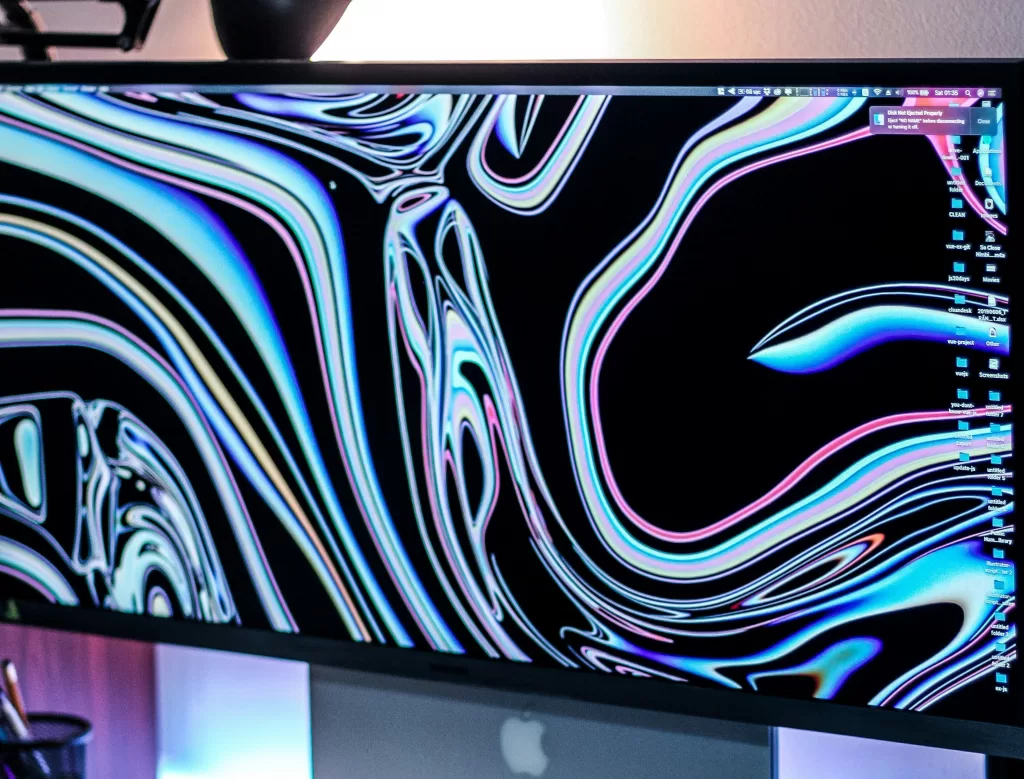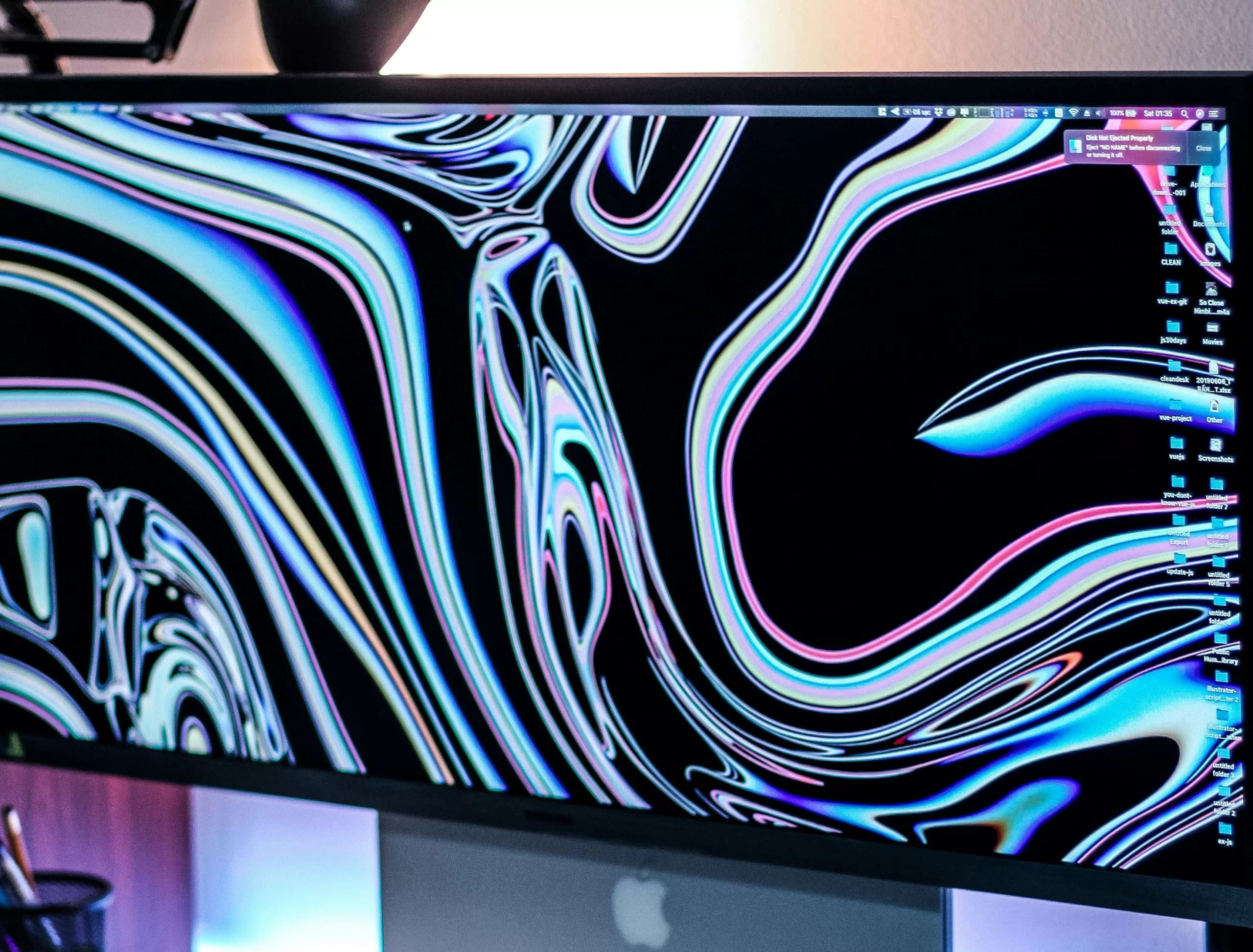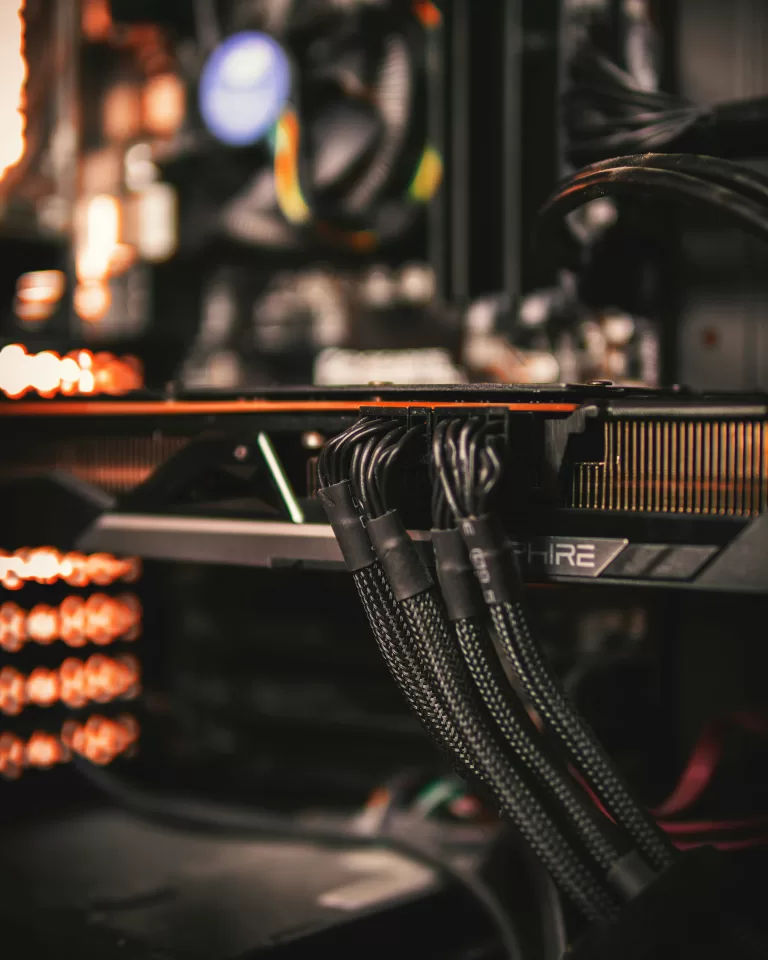OLED, or Organic Light Emitting Diode, is one of the most advanced display technologies available today. Well, you may have come across it in some high-end branded TV sets, Smartphones, and some monitors. But what indeed sets OLED apart from the other kinds of displays such as LCD? Alright, let’s think about it in this way.

What is OLED?
An OLED display is the type that produces light through organic materials when an electric current flows in them. The word ‘organic’ used here is not synonymous with something natural or grown in the soil. It is also called hydrocarbons, which are molecules containing carbon and hydrogen. These organic compounds play a decisive role in how OLED screens operate.
Each screen is made up of millions of tiny light-emitting diodes. These diodes act as pixels on the screen. Each pixel can light up in different colors or turn off completely, which allows screens to create bright colors and deep blacks.
How Does OLED Work?
To understand how it works, it’s important to compare it with a more common type of screen: LCD. In an LCD screen, there is a backlight that shines through layers of liquid crystals and filters to create images. This means even the black parts of the image are lit up because the backlight is always on.
In OLED screens, each pixel is its own light source. There’s no need for a backlight. This is the big difference between OLED and other displays. Because the pixels can turn on and off individually, the screen can produce true black. When a pixel is off, it emits no light, making black look much deeper than on an LCD.
The Layers of an OLED Screen
An OLED screen consists of several layers stacked together. Here’s how they work:

- The Substrate Layer – This is the foundation of the screen, holding everything together. It can be made of glass or plastic.
- The Anode – This layer removes electrons when current flows through the OLED. It helps the pixels light up when needed.
- Organic Layers – These are the key components. There are two main organic layers:
- The Emissive Layer – This is where light is created. When an electric current passes through it, this layer emits light.
- The Conductive Layer – This layer helps move electricity to the emissive layer.
- The Cathode – This layer supplies electrons to the organic layers. It allows the pixels to light up when needed.
When electricity is passed through these layers the organic matter becomes luminous. Every icon on the television turns on one at a time in the form of pixels to give the picture that you get to see. The most important advantage of OLED screens is that they do not require a backlight at all which makes them thinner and more flexible than the others.
What Makes OLED Special?
OLED technology has several advantages over traditional displays. These are the reasons why it’s becoming so popular:
- True Blacks – Since each pixel can turn off completely, OLED displays show deep, true black. This creates a huge contrast between dark and bright areas of the screen.
- Vivid Colors – OLED displays can produce a wider range of colors compared to LCD screens. This makes images look more vibrant and realistic.
- Thinner and Lighter – Without the need for a backlight, OLED screens are much thinner. This allows manufacturers to create slimmer devices, whether it’s a TV, monitor, or smartphone.
- Energy Efficiency – Since OLED screens can turn off individual pixels, they use less energy when showing dark images or scenes. This can extend the battery life of smartphones and reduce the power consumption of TVs.
- Faster Response Time – OLED pixels can change their brightness faster than those in LCDs. This results in smoother motion, which is particularly important for gamers or when watching fast-moving scenes.
- Flexible Displays – Because OLED screens are so thin, they can be made flexible. This has led to the development of curved TVs, foldable smartphones, and other innovative devices.
Different Types of OLED
Not all OLED displays are the same. There are two main types you’ll come across:
- AMOLED – This stands for Active Matrix OLED. It’s the most common type of OLED screen used in smartphones and smaller devices. It provides better control over each pixel, improving image quality and power efficiency.
- WOLED – This stands for White OLED. It’s used in larger devices like TVs. In WOLED screens, each pixel produces white light, which is then filtered into red, green, and blue subpixels to create color. LG is one of the leading companies that use WOLED in their TVs.
OLED vs. LCD
OLED isn’t the only display technology out there. Let’s compare it with LCD, the most common display type:
- Backlight: LCD screens need a backlight to illuminate the display. OLED doesn’t. Each pixel in an OLED screen lights up on its own.
- Black Levels: OLED can produce perfect black because the pixels turn off completely. LCD screens always have some light leakage, so black looks more like dark gray.
- Thickness: OLED screens are thinner because they don’t need a backlight.
- Viewing Angles: OLED offers better viewing angles than LCD. Even if you view the screen from the side, the image remains clear and vibrant.
- Burn-in Risk: OLED screens can suffer from something called “burn-in.” This happens when a static image is left on the screen for too long, causing a faint afterimage to remain. Manufacturers have introduced various techniques to minimize this risk, but it’s still something to be aware of.
- Price: OLED screens are more expensive to produce than LCD screens. This is one reason why OLED devices often come with a higher price tag.
The Drawbacks
While OLED has many benefits, it’s not perfect. Here are some downsides to be aware of:
- Burn-in – As mentioned earlier, OLED screens can suffer from burn-in. This happens when static images, like logos or text, remain on the screen for long periods. The pixels wear out unevenly, leaving a ghost image. Check this Longevity Burn-In Test (Updates And Results From 100 TVs) From RTINGS.
- Shorter Lifespan – OLED screens don’t last as long as LCDs. The organic materials degrade over time, especially the blue pixels. This can lead to color shifts and a reduction in brightness over time.
- Brightness Limitations – While OLED screens can produce great colors and deep blacks, they’re not as bright as some high-end LCD screens. In very bright rooms or direct sunlight, LCD screens may offer better visibility.
- Higher Cost – OLED screens are more expensive to produce, which makes devices with OLED displays more expensive for consumers.
The Future of OLED
However, OLED technology can be considered one of the developing technologies nowadays, and the rates of its evolution can be seen every year. Currently, manufacturers are doing all they can to improve OLED screens in terms of brightness, durability as well as cost. For instance, LG uses Micro Lens Array (MLA) technology in which extra lenses are placed on the screen. This aids in collimating the light hence getting a bright screen despite the energy consumption.
Future evolution may include tandem OLEDs whereby two layers of OLED materials are embedded on top of each other. This could enhance the brightness by two times or even more and at the same time expand the life cycle of the screen.
Conclusion
OLED has become the most popular and highly effective technology for displays. It reveals rich black’s giving, eye-popping colors and very slim frosted screens that no traditional LCDs can equal. Though there are some drawbacks such as burn-in and relatively high costs, the future seems bright for OLED technology as many manufacturers keep on experimenting. If you are planning to get a new device with an OLED screen, you will be getting one of the best screen technologies of the current generation.




